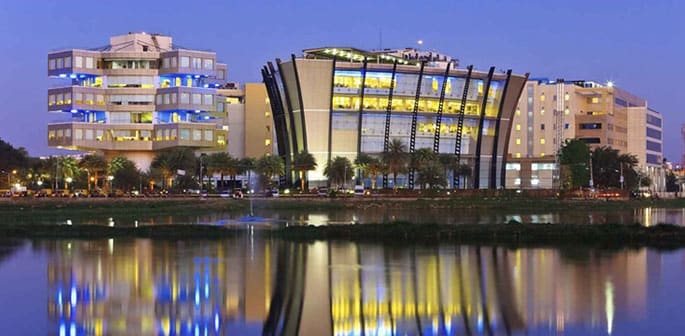When the gold mines were set up, it provided huge opportunities
Bengaluru is India’s third most populated city with over 12 million people. More importantly, it is known for being the Silicon Valley of India.
Known as Bangalore, in 2005, a proposal was accepted by the Government of Karnataka to rename Bangalore to Bengaluru.
But how did the capital city of Karnataka state become South Asia’s technology hub and the Silicon Valley of India?
The city’s origin dates back to 1537 when the Indian ruler under the Vijayanagara Empire Kempe Gowda settled there.
Over the centuries, the city became multi-ethnic with a cultural diversity all of its own.
The British East India Company found the city’s central location to be one of the best places for trading. As a result, money poured in.
In terms of technology, a number of events spanning decades led to Bengaluru becoming the IT centre of India.
Unlike its famous counterpart in California, which was mostly built with investor funds, the Silicon Valley of India has purely risen from those who had moved there.
With so many successful technology startups, we look at how Bengaluru grew to be the high-tech centre it is known for today.
Persecution & Immigration – Fleeing from War
The city was populated by people who fled there in an attempt to get away from any wars that they were involved in.
That is why there are so many different languages spoken there today.
The Tamils were the first community which moved to Bengaluru in their masses. Many of them moved there in the 12th century.
Other communities including the Maharashtrians soon called Bengaluru home.
Many had been escaping wars as well as persecution. This part of India was considered to be safe because of the diversified culture.
Living alongside each other and sharing the same burdens, their lives turned to creating a thriving region.
Gold & the British Raj – The Gold Mine Opens
Moving to Bengaluru in order to escape persecution changed in the 19th century. An influx of people moved there due to the Kolar Gold Fields (KGF).
When the gold mines were set up, it provided huge opportunities for the people of Kolar as well as those living in Bengaluru 60 miles away.
With the growth of the mines and the resulting demand for labour, people from different areas moved there. Indians, as well as Europeans, settled there.
The centre consisted of British and Indian engineers, geologists and mine supervisors who lived lavish lifestyles.
A further influx of English soldiers post-World War II transformed Bengaluru into Little England.
KGF was renowned for gold mining for more than a century, however, the mines closed on February 28, 2001, due to low gold production levels.
Old Money – The British bring their War Pensions
As Bengaluru was popular because of its climate, the British married into the culture and grew old there rather than return to their homeland.
Many of these ex-pats survived purely on their British army pensions without the need to work at all.
A lot of British war veterans enjoyed the mild climate and greenery in the city that was nicknamed ‘The Garden City’.
However, as the economy’s wealth continued to grow, major companies started to pay attention.
The likes of HMT Limited, Bharat Electronics Limited and Indian Telephone Industries Limited set their headquarters up in Bengaluru during the 1950s.
American companies like Texas Instruments also set up offices in India. In 1985, it was the first multinational technology company to set up an R&D centre in India.
By the 1970s, Bengaluru was being populated by scientific research companies, engineers and academics. But one of the biggest contributors in transforming Bengaluru into the Silicon Valley of India was the TATA Group.
TATA – Education for the Future
Even though TATA Group headquarters are located in Mumbai, it’s co-founder Jamsetji Tata has an association with Bengaluru.
He had established Bengaluru’s Indian Institute of Science in 1909. It is an accredited university for research and higher education in science and engineering.
Tata knew that education was the way forward and helped establish an institution which would develop technology experts for years to come.
The university has been ranked the number one university in India for three consecutive years.
Like the gold rush in the 19th century, the university provided opportunities for people in Bengaluru and across the world during the 20th century.
The level of education is so advanced in the city that it is an attractive prospect for those wanting to get into the technology industry.
Though Tata helped establish an education centre which would develop technology experts, the creation of the Indian Silicon Valley falls to RK Baliga, the first Chairman and Managing Director of Keonics, Karnataka Electronic.
Baliga dreamt of turning Bengaluru into the “Silicon Valley of India” when he came up with the concept of Electronic City.
It was met with scepticism but the then Chief Minister of Karnataka D Devaraj Urs supported him. Electronic City was established on just 332 acres.
It gained a lot of momentum during the 1990s and is now one of India’s largest Information Technology (IT) hubs, spread over 800 acres.
Today, Electronic City houses more than 100 IT and electronics companies who employ over 60,000 people.
The Population Explosion – Millions look for Work
With Bengaluru becoming the technology centre in India, the population increased significantly.
The 1990s pushed the population to over 4 million, and by the year 2000, it was more than 5.5 million people.
Unfortunately, during these two decades, the area turned Bengaluru from the Garden City into the Concrete City.
A side effect was that quiet areas like Whitefield expanded during the technological boom. Not so much for technology, but for real estate.
More people meant more housing, so this attracted plumbers, electricians, cabinet makers and builders looking to capitalise on the increase in work for them.
Different professions benefitted from the continuous increase in population.
As with any boomtown, Bengaluru continues to attract the rural poor whose agricultural lands are annually decimated by monsoon floods.
It has become the land of plenty. With over 12 million inhabitants Bengaluru is now synonymous with affluence.
The Ideal Location – India’s Geographical Centre
Technology now dominates the Bengaluru lifestyle so it was no surprise when it was chosen as a central hub because of its geographical location.
Centred in the middle of the financial and industrial centres of Mumbai, Chennai, Cochin and Tuticorin, Bengaluru is perfectly situated.
It is easy to connect with these major centres but if there is a problem, Bengaluru can still connect with other parts of the world.
Those who transformed the city into what it is today had immense wealth and those maintaining it are even richer.
Former Indian Prime Minister Manmohan Singh said in 2006: “Bengaluru is a brand the world identifies India with.”
It is the single biggest reason why India has become such a hot investment destination.
Today, the new space program in India dictates scientific companies will continue to thrive and build on their expertise.
Both technology and the space programs mean more robotics, likely the next phase of the global electronic connection.
Local laws and smart entrepreneurs assist one another and help to maintain the region’s economy.
Bengaluru is one of the top cities for technology and the fastest growing communication hub in the world.
It is a dynamic megacity with over 12 million people and that population continues to increase.
It would not have been possible without those who migrated to the city but it has led towards transforming India into a major centre for technology.
Silicon Valley in California builds economic benefits to the state and the country. It is the same with Bengaluru.
Will it eventually become the richest city in the world? Who knows but India is betting on it especially since it continues to grow.





























































